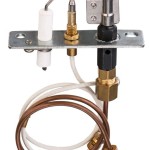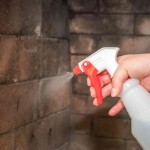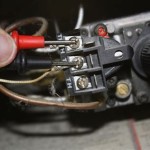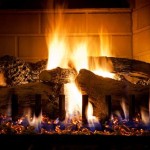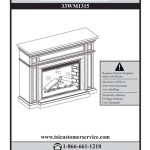Installing a Fireplace Mantel: A Comprehensive Guide
A fireplace mantel serves as both a focal point and a functional addition to a living space. It provides a decorative shelf for displaying items and also acts as a protective barrier against the heat rising from the fireplace. Properly installing a fireplace mantel is crucial, both for its aesthetic appeal and for ensuring safety. This article details the process of installing a fireplace mantel, covering the necessary preparations, tools, and step-by-step instructions.
Planning and Preparation
Before commencing the installation process, a thorough assessment of the fireplace and surrounding area is essential. This includes measuring the dimensions of the fireplace opening, the available wall space, and the desired height and width of the mantel. Precise measurements are critical to ensure the mantel fits correctly and is proportionally balanced with the fireplace.
The type of fireplace is also a significant factor. Gas fireplaces typically generate less heat than wood-burning fireplaces, which affects the clearance requirements. Local building codes and manufacturer guidelines should be consulted to determine the minimum distance between the mantel and the firebox. Failure to adhere to these requirements can pose a fire hazard.
Selecting the appropriate mantel material is another important aspect of the planning phase. Wood, stone, and cast iron are common choices, each offering different aesthetic qualities and heat resistance. Wood mantels are popular for their versatility and warmth, but they require adequate clearance from the firebox. Stone and cast iron are more heat-resistant but may require specialized installation techniques due to their weight.
Gathering the necessary tools and materials is a prerequisite for a successful installation. The following items are generally required:
*
Measuring Tape:
For accurate measurements of the fireplace and mantel.*
Level:
To ensure the mantel is installed horizontally and vertically.*
Stud Finder:
To locate wall studs for secure mounting.*
Drill:
With various drill bits for pilot holes and screw installation.*
Screws/Lag Bolts:
Appropriate length and strength for securely attaching the mantel to the wall studs.*
Construction Adhesive:
For added stability and to fill any gaps between the mantel and the wall.*
Safety Glasses:
To protect the eyes from debris during drilling and cutting.*
Dust Mask:
To prevent inhalation of dust particles.*
Pencil:
For marking measurements and drilling locations.*
Shims:
To level the mantel if the wall is uneven.*
Caulk (optional):
To seal any gaps and create a finished look.Once all the tools and materials are assembled, the work area should be prepared. This includes clearing the surrounding area of furniture and covering the floor with a drop cloth to protect it from dust and debris.
Installation Steps
The installation process begins with locating the wall studs. Using a stud finder, identify the studs behind the fireplace wall. Mark their location with a pencil, as these will be the primary points of attachment for the mantel.
Next, determine the desired height of the mantel. A common height is around 4.5 to 5 feet from the floor, but this can be adjusted based on personal preference and the dimensions of the fireplace. Mark the desired height on the wall, ensuring it is level using a level.
If the mantel requires a support structure, such as corbels or a supporting beam, install these first. Attach the supports to the wall studs using screws or lag bolts. Ensure the supports are level and securely fastened, as they will bear the weight of the mantel.
Carefully lift the mantel into place and align it with the marked height and the previously installed supports. Use shims, if necessary, to level the mantel and ensure it sits flush against the wall. Once the mantel is in the desired position, use a pencil to mark the locations of the wall studs on the back of the mantel.
Pre-drill pilot holes through the back of the mantel at the marked stud locations. This will prevent the wood from splitting when the screws are installed. Apply construction adhesive to the back of the mantel where it will contact the wall. This will provide added stability and help to fill any gaps.
Carefully align the mantel with the wall studs and insert screws or lag bolts through the pre-drilled holes and into the studs. Tighten the screws until the mantel is securely attached to the wall. Avoid over-tightening, as this can damage the wood.
Once the mantel is securely attached, inspect it to ensure it is level and flush against the wall. If there are any gaps or imperfections, use caulk to seal them and create a finished look. Clean up any excess adhesive or caulk with a damp cloth.
Ensuring Safety and Compliance
Safety is paramount when installing a fireplace mantel. Adhering to local building codes and manufacturer guidelines is crucial to prevent fire hazards. Verify that the mantel is installed at the appropriate distance from the firebox, as specified by the manufacturer and local regulations.
For wood-burning fireplaces, consider using a non-combustible material, such as stone or cast iron, for the mantel or incorporating a heat shield to protect the wood from excessive heat. Regularly inspect the mantel for any signs of damage or deterioration, such as cracks or charring, and address any issues promptly.
The structural integrity of the mantel installation is also critical. Ensure the mantel is securely attached to the wall studs using appropriate fasteners and that the support structure, if any, is capable of bearing the weight of the mantel and any items placed on it. Overloading the mantel with heavy objects can compromise its stability and pose a safety risk.
It is also recommended to install smoke detectors and carbon monoxide detectors in the vicinity of the fireplace. These devices provide an early warning in the event of a fire or carbon monoxide leak, allowing for prompt evacuation and potentially saving lives.
Finally, familiarize oneself with proper fireplace operation and maintenance. This includes regularly cleaning the chimney, using appropriate fuel, and ensuring adequate ventilation. Following these guidelines will help to prevent fires and ensure the safe and efficient operation of the fireplace.
By carefully planning the installation, following the steps outlined above, and prioritizing safety, a fireplace mantel can be installed successfully, enhancing both the aesthetic appeal and functionality of the living space.

Fireplace Mantel Installation Tips How To Antique Woodworks

Fireplace Mantel Installation Before And After

Installing A Barn Beam Mantel Before The Stone Is Best Option Here One Of Our Custom Fireplace Mantels Insta Home Remodel

How To Install A Floating Mantle The Easy Way In Just One Afternoon

How To Install A Fireplace Mantel

Fireplace Mantels Installation Care Redwood Burl Inc

How To Install A Fireplace Mantel Woodworking Plans Available

Installing A Heavy Wood Mantel 2024 Beginners Guide

How To Install A Floating Mantle The Easy Way In Just One Afternoon

Fireplace Mantel Installation Tips
Related Posts

